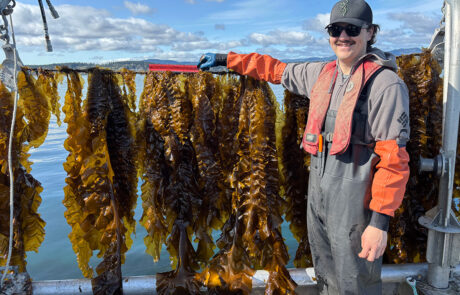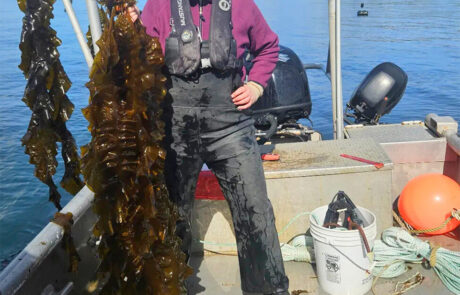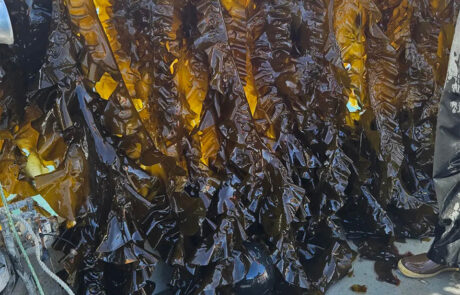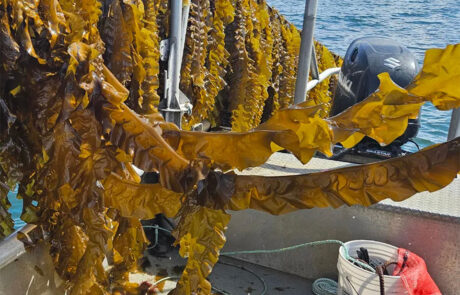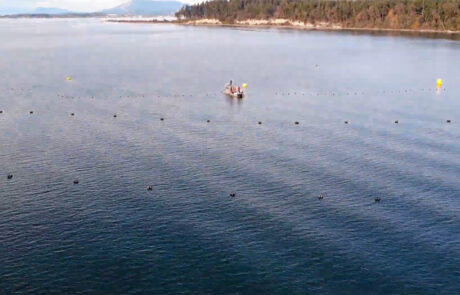ȽEL,TOS Seaweed Farm Update
Submitted by Cascadia Seaweed
Cascadia Seaweed is honoured to work in partnership with SȾÁUTW̱ First Nation to cultivate a regenerative seaweed crop and study the unique biodiversity of ȽEL,TOS territory. Together, we are advancing nature-based solutions that support healthy ecosystems and future opportunities for coastal communities.
At the SȾÁUTW̱ First Nation ȽEL,TOS Seaweed Farm, we’re growing Sugar kelp—one of over 30 kelp species found along this coast. The farm was successfully seeded in November (watch the video), marking the first time our team completed this process before the winter solstice. This timing is significant, as the solstice signals a turning point in the natural light cycle that supports vigorous kelp growth.
Now, as spring progresses and daylight increases, the kelp blades are growing quickly, longer and stronger with each passing week. This is a critical period for the farm, and our team is regularly on the water monitoring the health and development of the crop.
Once harvested, the kelp will be processed using a chemical-free method to create a liquid seaweed extract. This extract is used in large-scale agriculture to help farmers grow more food while reducing their reliance on synthetic fertilizers.
In addition to the farm, an exciting new research initiative is now underway. In March, the SȾÁUTW̱ Biodiversity Project officially launched, in partnership with the National Research Council (NRC) and Cascadia Seaweed. This six-month study is using underwater cameras and AI technology to monitor marine life at three sites, a wild kelp bed, a farmed kelp site, and an unvegetated reference area. Using SȾÁUTW̱ LookSea cameras, along with Cascadia’s CTD sensors and water sampling equipment, the project will help us better understand how marine species interact with kelp habitats over time.
Keep an eye on the water this May—you may spot boats out on the ȽEL,TOS farm during the busy harvest season!
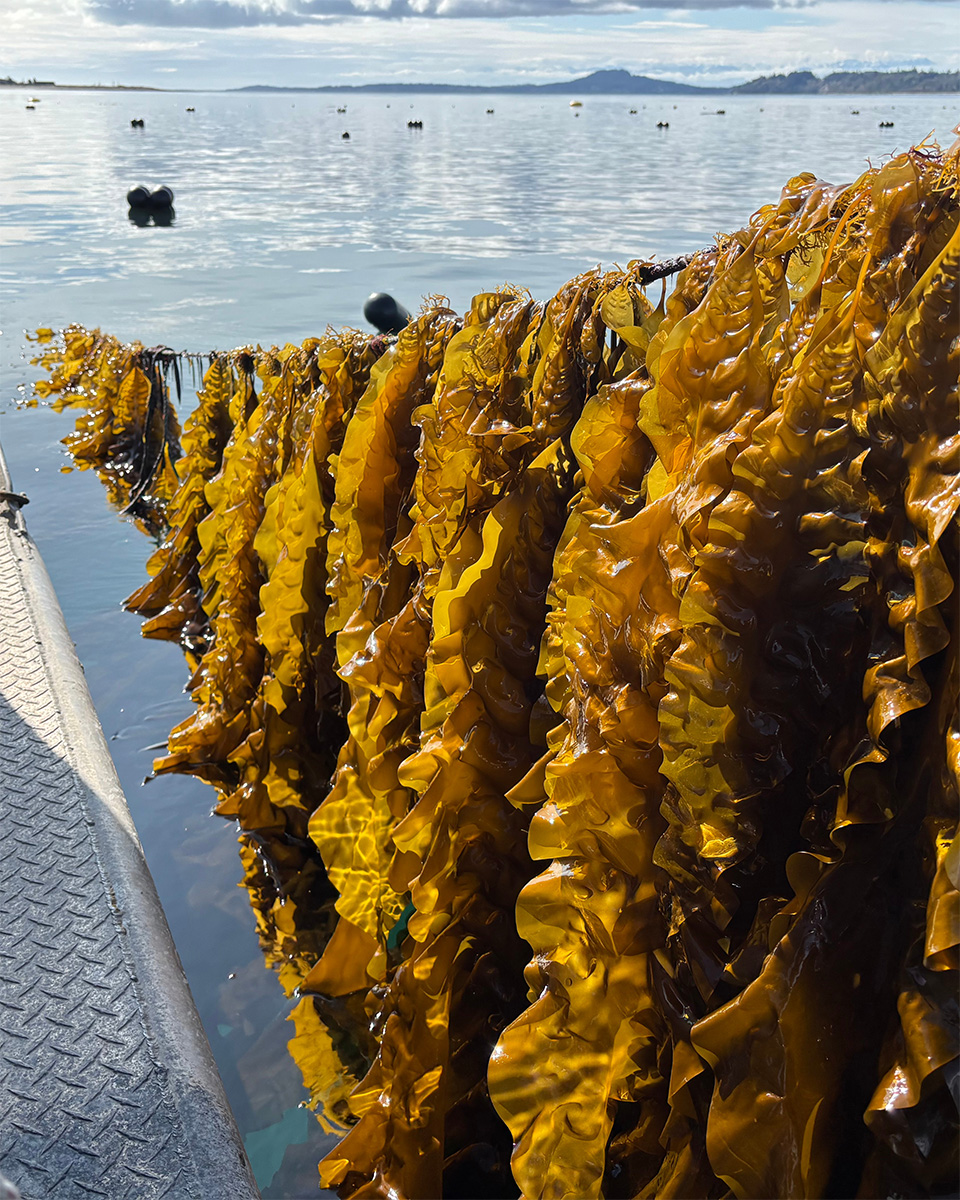
Click an image for a larger view.
